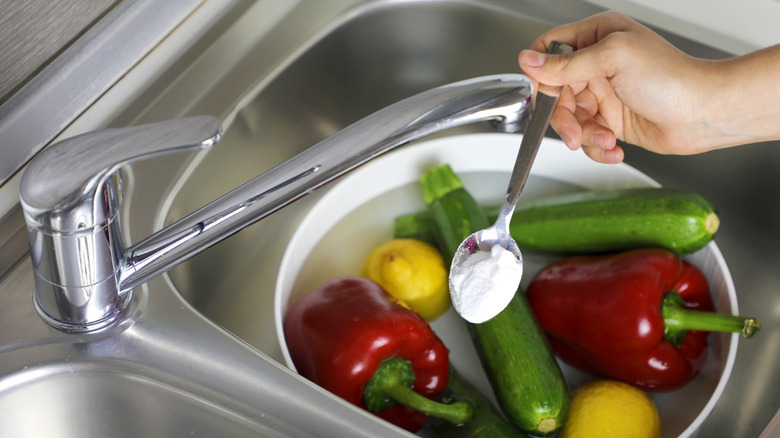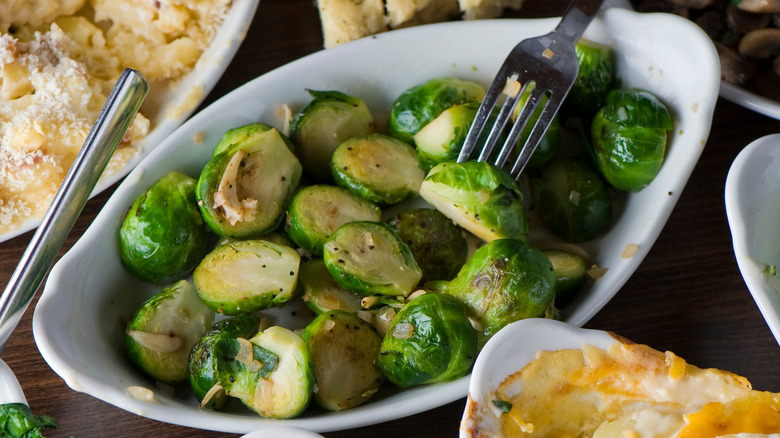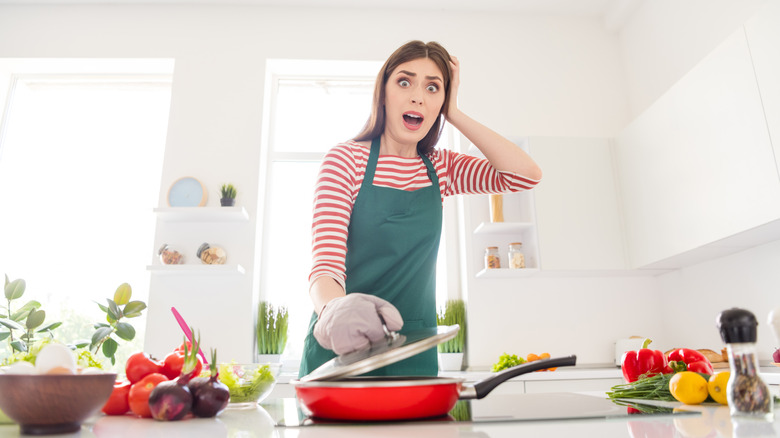The Baking Soda Trick To Protect Vibrant Vegetable Colors
Since its discovery, humble baking soda has achieved a lot in the past 200 years. From all-purpose household cleaners to acid reflux relief to odor eliminators, baking soda is no stranger to multitasking. In the medical world, it's often prescribed to help regulate your blood's pH or acidity level. In the culinary world, some fastidious folks use baking soda as a cleaning agent to wash produce, although the FDA does not endorse this practice and recommends simply rinsing with water. Since baking soda is an edible ingredient, this cleaning method should not pose any safety risk.
Another culinary function of baking soda rests in its ability to perk up produce coloring. Any cook can relate to this scenario: you're cooking a healthy pot of farm-fresh greens, only to miss the peak of brightness and watch in horror as the radiant green turns olive-brown. Next time, just add a dash of baking soda to your boiling water to preserve that vibrant hue. By turning the cooking medium alkaline rather than acidic, you rescue your vegetables from a drab fate.
How does baking soda help vegetables retain color?
To understand why alkalinity can protect your veggies' verdancy, let's first look at one of the common coloring compounds in produce. Chlorophyll is the compound responsible for making vegetables green. Think Brussels sprouts, broccoli, asparagus, and green beans. When you cook these veggies, you'll notice a color change from dull green at the raw stage to bright green at the peak chlorophyll activation to olive green after prolonged cooking. That's because the magnesium core within the chlorophyll becomes displaced by hydrogen in an acidic environment. In layman's terms, lost magnesium equals dull chlorophyll. By neutralizing the acidity of the cooking medium with baking soda (which is alkaline), you can slow down this shift to keep the color brighter.
Other healthy-hued foods for your veggie-packed recipes include tomatoes, red cabbage, purple onions, and yellow corn. The inflammation-fighting antioxidants in these healthy foods give them distinct colors. Unlike chlorophyll, though, these other antioxidants don't lose potency when cooked, and some even become easier to absorb than when they're raw.
The potential downsides of using baking soda
If you're using baking soda to brighten your beans, then remember that less is more. A small pinch can heighten the color, but a larger amount — say, ⅛ of a teaspoon or more — can affect the vegetable's texture in a big way. Too much baking soda can make your veggies mushy, so use this cooking hack carefully.
Another caveat of baking soda is its sodium content. Baking soda's scientific name is sodium bicarbonate, and that first word is important. ½ teaspoon of the ingredients contains over 600 milligrams of sodium. While just a pinch in your cooking water won't contribute dramatically to the food's sodium content, folks on a strict low-sodium diet should be aware of it nonetheless.
On the upside, you can save that salty vegetable cooking water to enhance a homemade sauce. The sodium from the baking soda, as well as the traces of vitamins released from the vegetables themselves, can add a little flavor (and nutritional) boost to your next gravy. And that's culinary multitasking at its finest.


